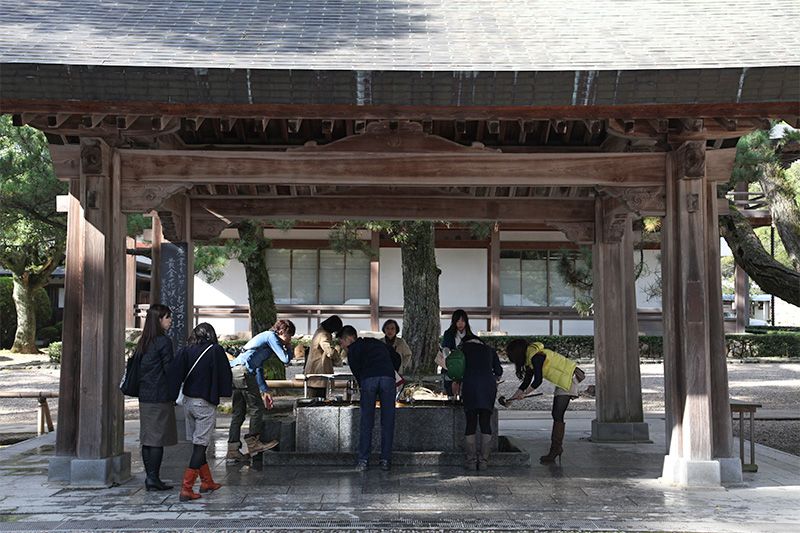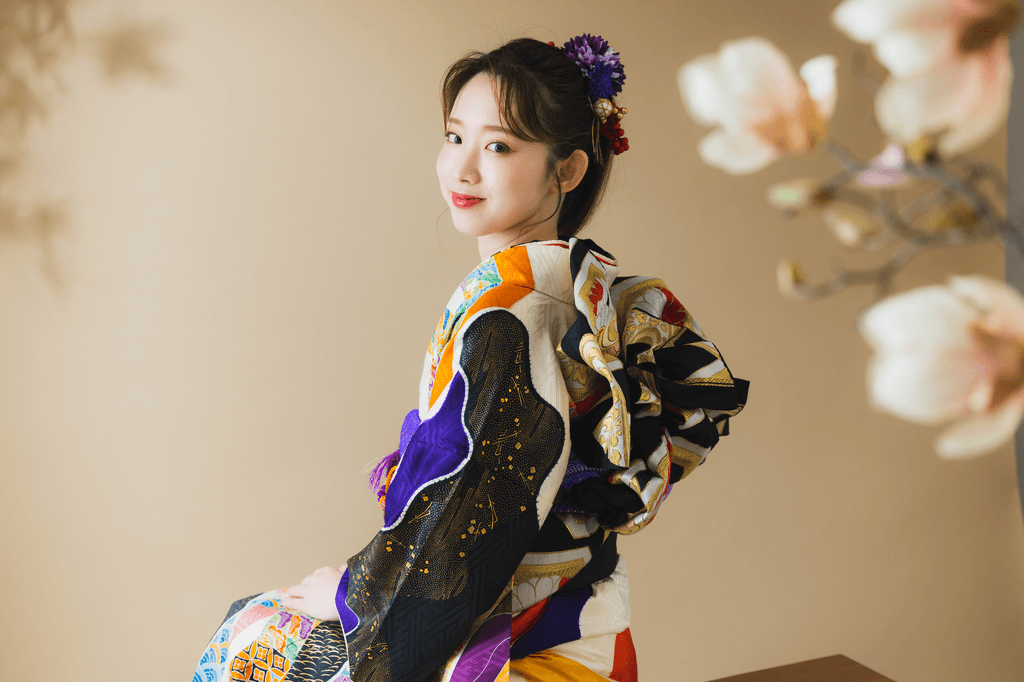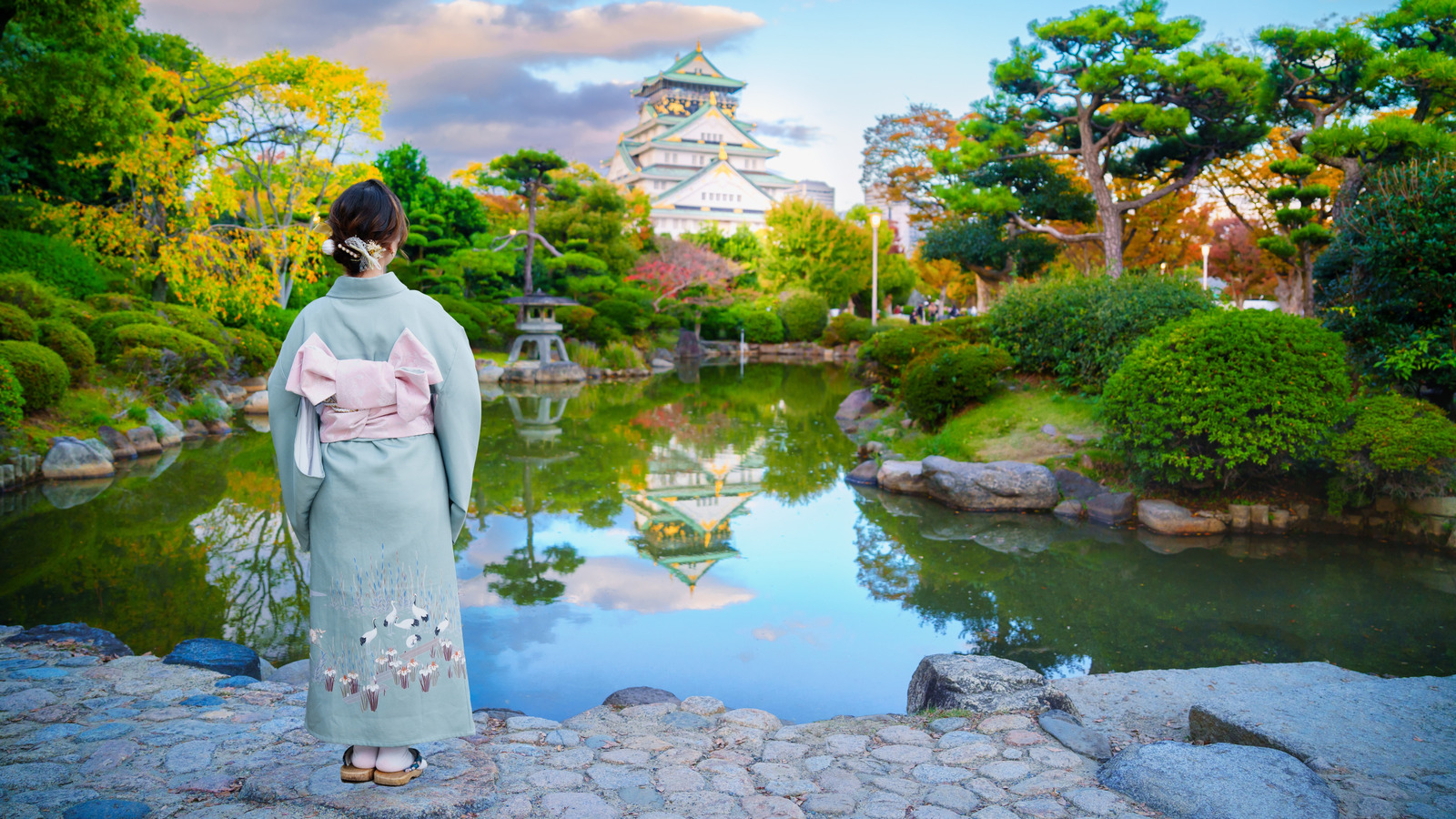Master the Art of Japanese Temple Etiquette: A Delightful Guide to Visiting in Kimono with Confidence and Grace!

Japan is a land of rich history and cultural heritage, with its temples offering a peaceful retreat from the hustle and bustle of modern life. When stepping into a temple adorned in the timeless elegance of a kimono, it’s important to be mindful of Japanese traditions to showcase respect and understanding. Understanding the guide to Japanese manners when visiting temples in kimono is central to immersing oneself into this serene world while gracefully upholding centuries-old customs. This guide provides insights into visiting both temples and shrines in Japan while ensuring that your kimono attire complements the occasion with utmost respect and authenticity.

- How to Visit a Temple
- How to Visit a Shrine
- The Basics about Overtourism in Japan
- Japan Temples
- What Should I Keep in Mind When Wearing a Kimono to Visit a Japanese Temple?
- Are There Specific Colors or Patterns of Kimono That Are Appropriate for Temple Visits?
- Is It Necessary to Remove My Shoes When Entering Certain Areas of a Temple, and How Should I Do This Gracefully in a Kimono?
- How Should I Behave While Walking or Taking Photos at a Temple When Dressed in a Kimono?
- Preserving the Sacred: A Summary of Visiting Temples in Kimono
How to Visit a Temple
Before you make your way to a Japanese temple, beginning with thorough research into its specific customs is crucial. Each temple in Japan may carry particular traditions and expectations, leading to varied etiquette protocols. Learn about these customs to ensure that your behavior aligns with the temple’s practices. Wearing a properly fitted kimono that is appropriate in color and style is also essential. Selecting attire that respectfully aligns with the formality and spirituality of the setting reflects your respect for this sacred space. Further, adopt a quiet and respectful demeanor upon approaching the temple, staying mindful of other temple-goers who may be in prayer or meditation.
Visitors in traditional kimono approaching the historic Kiyomizu-dera temple in Kyoto
To embrace traditional practices during your visit, observe etiquette such as bowing at the entrance and performing purification rituals at designated fountains. Bring a small donation to offer before praying, adhering to customary practices. Here’s a quick guide to maintain proper decorum:
- Research Temple Customs: Understand specific expectations to avoid unintended disrespectful acts.
- Wear a Proper Kimono: Ensure it is appropriate for the occasion in terms of color and style.
- Practice Quietness: Maintain a calm and respectful demeanor, honoring the significance of the location.
- Follow Traditional Etiquette: Bow at the entrance, perform cleansing rituals, and offer a donation.
- Respect Temple Rules: Avoid loud voices, photography in prohibited areas, and thank the staff as you depart.

How to Visit a Shrine
Shrines in Japan possess a unique aura and call for specific etiquette, especially when visiting in a kimono. The visit begins with purification rituals commonly held at the shrine’s entrance, emphasizing cleansing the hands and mouth. This is an act not just of physical cleanliness but of spiritual mindfulness, preparing oneself to step into a place of worship. As you approach the offering box, ensure your conduct respects the sacred nature of the location: throw in a coin, bow twice, clap your hands twice, and bow once more.

The traditional attire of a kimono adds to the solemnity of the occasion. Ensure your kimono is draped correctly, always keeping the left side over the right, as reversing it is considered an unfitting practice for anyone still vibrant with life. While walking around the shrine, do so quietly and avoid obstructing pathways, particularly the direct paths people use for prayer.
- Perform Purification Ritual: Cleanse yourself at the entrance as a sign of respect.
- Offer Coin Ritual: Conduct this practice with sincerity and respect by bowing and clapping.
- Wear Kimono Correctly: Ensure proper draping and avoid flashy accessories.
- Walk Respectfully: Be mindful and maintain the tranquility of the sacred grounds.
- Appreciate the Atmosphere: Be respectful of the sacred nature and adhere to photography rules.
The Basics about Overtourism in Japan
Overtourism in Japan presents a challenge as it leads to overcrowded sites, strained resources, and disruptions to local communities. Popular tourist destinations like temples experience the brunt of this influx, emphasized by a need for tourists to uphold traditional etiquette. The surge in visitors not only impacts the experiences of those visiting but stresses the very infrastructure these cultural sites depend on.
Practicing proper conduct, such as when dressed in traditional attire like a kimono, is pivotal. This starts with understanding the customs and embracing activities that respect these ancient sites. By promoting a considerate approach to tourism, we ensure the preservation of Japanese cultural heritage, offering a meaningful and enriching experience for all.
- Impact of Overtourism: Affects infrastructure and the cultural charm of popular sites.
- Preserving Heritage: Prioritize responsible behavior to support local traditions.
- Engagement in Proper Conduct: Act respectfully, especially when in traditional attire like a kimono.
- Promotion of Considerate Tourism: Embrace practices that contribute positively to community welfare and tourism sustainability.
Japan Temples
When visiting temples in Japan, wearing your kimono with neat precision is key. The ensemble should be meticulously arranged, and footwear must follow traditional guidelines. Often, this includes the removal of shoes upon entering certain areas, a practice that signifies respect for the sanctity of the temple’s inner spaces. Exhibiting respect is further demonstrated by bowing as you enter and making a small donation before engaging in prayer or meditation.

Silence is golden within temple grounds, with conversations kept to a minimum to preserve the tranquil atmosphere. Participation in purification rituals like washing hands and rinsing the mouth at temizuya establishes a mindset of deep respect and introspection.
- Dress and Footwear: Kimono should be properly adjusted; adhere to traditional footwear protocol.
- Respectful Practices: Bow on entry and offer donations.
- Maintain Quietude: Keep noise low to maintain the temple’s serenity.
- Engage in Purification: Participate in rituals like washing hands and mouth.
- Adherence to Temple Customs: Respect specific rules regarding photography or areas for prayer.
What Should I Keep in Mind When Wearing a Kimono to Visit a Japanese Temple?
Choosing the right kimono when visiting a Japanese temple is paramount to reflecting respect for the spiritual environment. Opt for modest and appropriately subdued styles; avoiding vibrant colors ensures your attire does not distract from the subdued beauty of the temple setting. Proper wearing of the kimono symbolizes mindfulness and an adherence to tradition that is deeply appreciated within these spaces.

Traditional footwear, such as zori or geta, completes the ensemble and needs to be removed upon entering buildings, showcasing reverence. Conducting yourself with quiet contemplation and restraint strengthens your connection to the site’s spirituality. Moreover, awareness of photography rules respects the sanctity of the temple and the privacy of visitors.

- Select Appropriate Kimono: Ensure it is modest and does not feature flashy colors.
- Wear Traditional Footwear: Use zori or geta and remove them before entry.
- Embrace Quiet Demeanor: Avoid disruptive behavior and nurture serenity.
- Respect Photography Rules: Consider restrictions to preserve temple sanctity.
Are There Specific Colors or Patterns of Kimono That Are Appropriate for Temple Visits?
In selecting a kimono for temple visits, subdued, traditional colors underscore the reverence and respect expected within these sacred spaces. Patterns should embody simplicity and elegance, eschewing bold designs in favor of those reflecting nature, like floral or peaceful motifs, that harmonize with the tranquil atmosphere of a temple.

Choosing seasonal colors demonstrates cultural appreciation, aligning with the Japanese tradition of embracing nature’s cycles. Subtlety in both the kimono and the obi encourages harmony and respect, ensuring your presence contributes positively to the spiritual setting.
- Opt for Subdued Colors: Reflect the spiritual aura with traditional shades.
- Choose Simple Patterns: Nature motifs are preferred over busy designs.
- Incorporate Seasonal Colors: Appreciate nature, reflecting cultural values.
- Coordinate Attire: Ensure harmony in kimono and accessories for respectful presentation.
Is It Necessary to Remove My Shoes When Entering Certain Areas of a Temple, and How Should I Do This Gracefully in a Kimono?
Removing your shoes is customary at many temple entrances to show deference and maintain the purity of the sacred space. Approach the entrance with grace, pausing to mindfully step out of each shoe without rush. This careful action demonstrates the respectful attitude called for in temple visits.
Once your shoes are off, keep your feet aligned and maintain composure in your kimono, paying attention to tucking away any trailing fabric to prevent it from touching the ground. Arrange your shoes neatly with toes pointed outwards to signal your readiness for departure. Entering the temple with such mindfulness enriches the spiritual experience for both yourself and other visitors.
- Approach Gracefully: Maintain calm and step out of shoes gently.
- Keep Composure: Ensure a composed posture in the kimono.
- Tuck Fabric Carefully: Prevent kimono from brushing the ground.
- Neat Shoe Arrangement: Position shoes for easy and respectful departure.
How Should I Behave While Walking or Taking Photos at a Temple When Dressed in a Kimono?
Adopting a modest and properly attired kimono appearance is essential in upholding the solemnity of temple grounds. As you walk through, do so with reverent slowness to appreciate the spiritual aura and avoid obstructing pathways. This practice is not just for courtesy but respects the sanctity and mindfulness of other visitors.
Japanese women in traditional kimono demonstrating proper temple walking etiquette at Kiyomizu temple
When taking photos, be aware of the environment and avoid disrupting the temple’s tranquility. Refrain from using flash photography, which can invade the peace of the temple. Engage respectfully with the customs such as quiet reflection or observing prayer practices to embrace the cultural experience with thoughtfulness.
- Dress Modestly: Ensure kimono conveys respect appropriate for the environment.
- Walk Reverently: Move carefully and avoid pathway obstructions.
- Be Mindful with Photos: Prevent disrupting temple atmosphere.
- Respectfully Engage in Customs: Participate in reflection and observation with cultural empathy.
Preserving the Sacred: A Summary of Visiting Temples in Kimono
Understanding the intricate manners of temple visits enhances your appreciation for Japan’s deep cultural roots and spiritual practices. Donning a kimono not only pays tribute to Japan’s heritage but also acts as a bridge connecting visitors to an authentic cultural experience. Whether at temples or shrines, each movement carries meaning — a bow here, a donation there — delicately intertwining the past with the present.

By adhering to the guide to Japanese manners when visiting temples in kimono, visitors not only contribute to the preservation of these historical sites but also enrich their personal encounters with Japan’s spiritual dimensions. Proactive learning, respectful practices, and thoughtful behavior ensure that every visit honors the sacred sites and encourages others to follow suit with respect and grace.



コメント